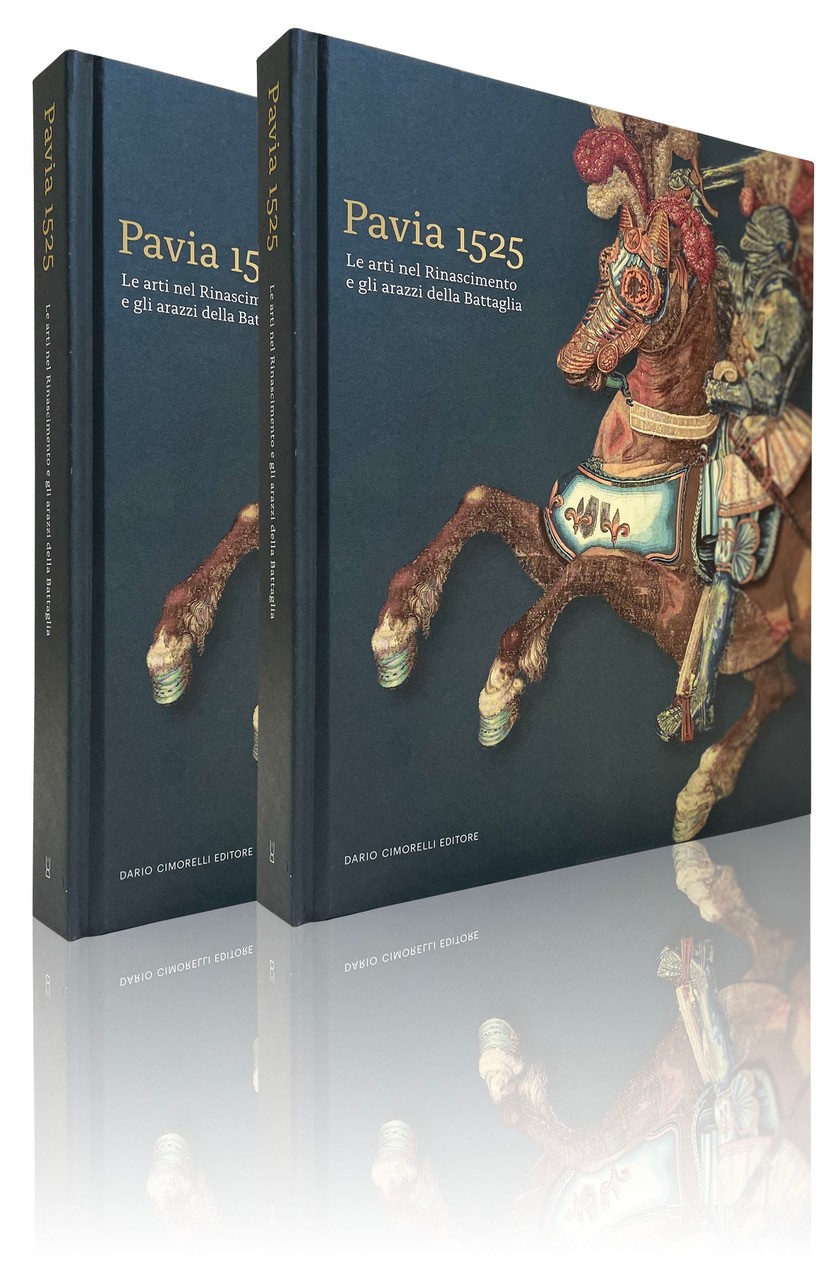
10 Oct PAVIA 1525. THE RENAISSANCE AND THE TAPESTRIES OF THE BATTLE. BY DARIO CIMORELLI EDITORE WITH TECNOSTAMPA.
From September 18, 2025, to January 11, 2026, the Civic Museums of the Visconti Castle in Pavia will pay tribute to the 500th anniversary of the Battle of Pavia, an event that marked the fate of modern Europe. The exhibition offers the general public a glimpse of the splendid artistic and cultural flourishing that the city of Pavia experienced during the Renaissance, in the historical phase preceding and leading up to the somewhat catastrophic event of 1525. It also aims to surprise visitors with the depiction of the battle, conceived and created just a few years later, in the seven spectacular Flemish tapestries of the d’Avalos Collection, made between 1528 and 1530 in Brussels in the workshop of Willem Dermoyen, based on designs by Bernard van Orley, and housed in the Capodimonte Museum, exceptionally loaned for the 500th anniversary.
The battle was a decisive clash between the French army of Francis I and the Spanish-Imperial forces of Charles V of Habsburg, aimed at establishing French or Habsburg dominance over Italy and Europe. Charles V’s victory led to the capture of the French king and the beginning of Spanish supremacy in Italy.
The Battle of Pavia also marked a turning point in military strategy, which would henceforth be characterized by the widespread use of firearms, as well as an important change in the composition of troops, a sort of Military Renaissance that now provided for a more homogeneous distribution of infantry, cavalry, and artillery, visible simultaneously in the French and Imperial armies. This battle marked a real evolution in Renaissance warfare, involving not only cavalry tactics but also new strategies employed by the infantry, which now faced the new threat of artillery. Individual firearms, arquebuses, were used by professional arquebusiers, who, organized into autonomous units, played an independent role on the battlefield from that of other units.
Donated to Emperor Charles V to celebrate his victory over Francis I of France, the tapestries are considered masterpieces of the highest quality, both for their designs and for the precious weaving technique used. They were made between 1528 and 1531 in Flanders, a renowned center for high-quality weaving, immediately after the battle of 1525. Made with fine materials, including wool, silk, and gold and silver threads, they offer a detailed visual representation of the battle, documenting the strategies, weapons, and clothing of the soldiers of the time. The presence of woven inscriptions on horses and armor helps to identify the characters and key elements of the scene, making them almost like a historical film sequence. The creator of the cartoons, which served as the basis for the weaving, was Bernard van Orley, an influential Flemish paint
The exhibition is also an opportunity to showcase a series of important works from Pavia’s civic heritage, including the exceptional presence of Giampietrino’s San Marino Altarpiece and its perfectly restored wooden choir, created by Lombard masters in the early 16th century from walnut and poplar wood, inlaid and painted.
This historical and artistic heritage, which the exhibition retraces, is collected in the exhibition catalogue, published by Dario Cimorelli Editore, ‘Pavia 1525’, edited by Laura Aldovini, Francesco Frangi, Pietro C. Marani and Mauro Natale, while the section ‘The tapestries of the Battle of Pavia’ is edited by Carmine Romano and Mario Epifani. The volume is a valuable reference and study document, the result of meticulous and tireless research, as evidenced in the opening pages by Annalisa Zanni, on the part of the curators, who “generously contributed to the analysis of a strategic historical period in the European landscape”.
PAVIA 1525
The arts in the Renaissance
and the tapestries of the Battle
edited by
Laura Aldovini
Francesco Frangi
Pietro C. Marani
Mauro Natale
for the section The tapestries of the Battle of Pavia
Carmine Romano
Mario Epifani
Pages: 320
Closed size: 23 x 28 cm
Binding:
thread stitching
with hardback cover
Publisher:
Dario Cimorelli Editore
Printing:
Tecnostampa
Loreto (AN) Trevi (PG) Italy
find out more
PAVIA 1525


